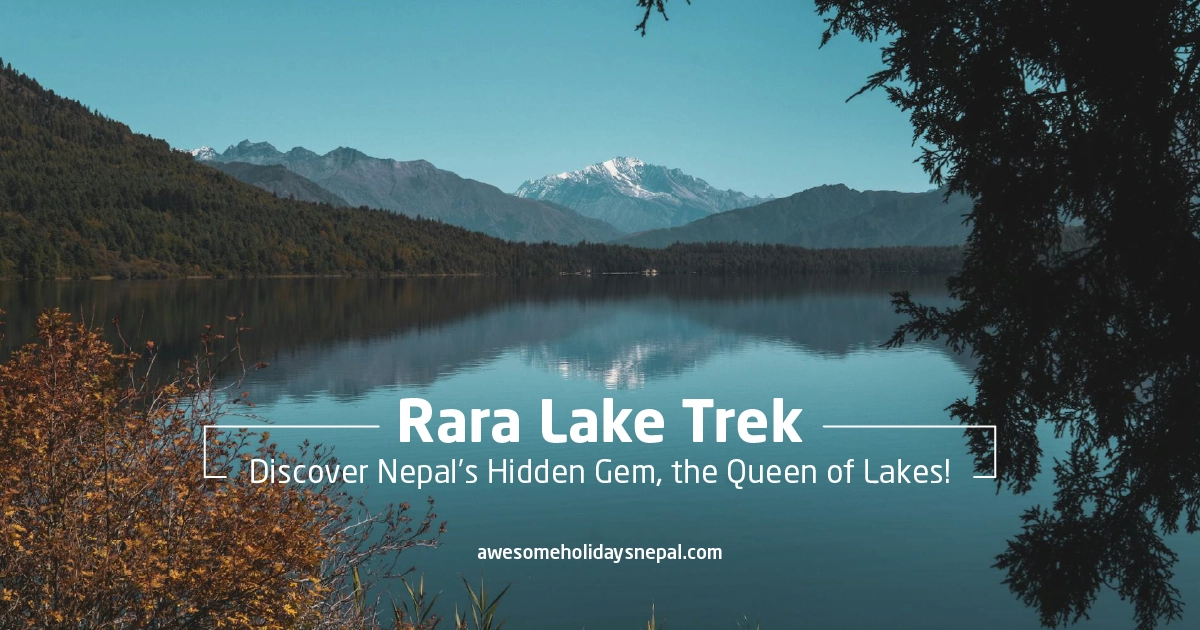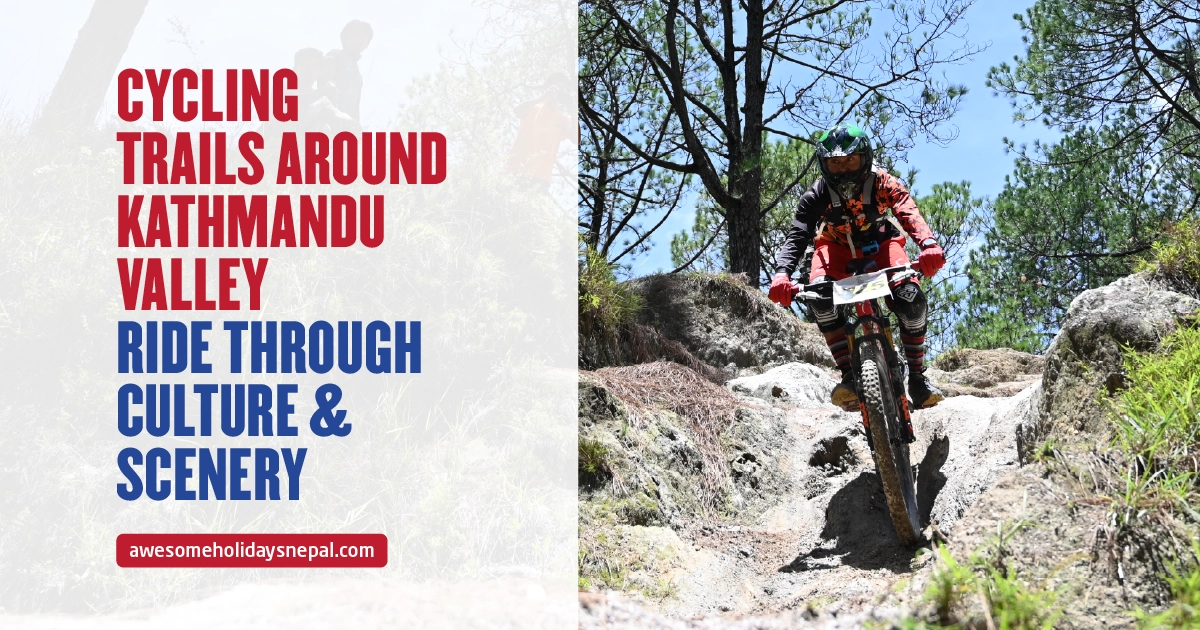Ghandruk: A Gorgeous Village in the Annapurna Sanctuary

Ghandruk is a gorgeous traditional Gurung village nestled in the lush hills of the Annapurna region that offers an authentic Himalayan experience. It is situated in the Kaski district of Nepal at an altitude of 1,940 meters (6,364 feet).
The picturesque village offers a panoramic view of some of the region’s most iconic peaks, such as Annapurna South, Machhapuchhre, Hiunchuli, and more. The village is rich in nature, culture, and mountain hospitality, so it is both a cultural retreat and an adventurer’s dream.
The Gorgeous Ghandruk Village
Location and History
With commanding views of the Himalayas—including Annapurna South, Machapuchare, and Hiunchuli—Ghandruk is well situated on a hillside. It is said to have been founded by Mongol immigrants passing through Tibet.
Trade routes between Nepal and Tibet used to depend on Ghandruk as a critical waypoint. Possibly suggesting a founding spot covered in trees, the name “Ghandruk” is believed to have derived from “Ghana” (dense or big) and “Rukh” (tree).

Ghandruk comprises the seven sub-villages that make up the village: Kotgaon, Majhgaun, Dandagaun, Taliloggaun, Dhyayargaun, Adbadaiyayargaun, and Gairigaun. You can reach Ghandruk either directly by bus from Nayapul, Pokhara (about 72 km) or by a six-hour walk. The Ghandruk community mainly consists of numerous Gurungs as well as Magars, Brahmins, Kamis, Sarkis, Chhetris, and Newars.
Cultural Richness and Local Lifestyle
Ghandruk is a lively hub of Gurung tradition and history. One can see the timeless appeal of slate-roofed homes constructed in an original architectural design by strolling along the stone-paved streets. Many of the residents, mostly Gurungs, are well-known for their friendly hospitality as well as their valour since quite a few serve in the Gurkha regiments. You should definitely visit the Gurung Museum that shows ancient clothing, implements, and war memorabilia, offering an enthralling perspective on the history of the society.
There are various homestays that provide visitors an opportunity to share daily life, meals, and even cultural activities including customary dances and thereby live like a local. These real interactions help guests to see Gurung culture’s great depth in a different way than just sightseeing.
Particularly in the British and Indian armies, several families have military service backgrounds. Still, crops grown on terraced fields—a mix of rice, maize, sorghum, vegetables and green tea—keep agriculture at the heart of daily life here. Sheep farming and the hospitality industry both support the local economy.
Scenic Beauty and Natural Attractions
Ghandruk enjoys a unique natural backdrop. It is situated on a terrace overlooking the impressive Himalayas, the village is among the top viewing points in Nepal. You get to witness gorgeous Himalayas such as Annapurna South, Hiunchuli, and Machhapuchhre tower above the horizon line that alters color with the light throughout the day.

The village is encircled by the dense rhododendron, oak, and pine forests. Part of Nepal’s first and biggest conservation area, the Annapurna Conservation Area protects a great variety of fauna and flora. Particularly in spring, one can regularly observe Himalayan monals, langurs, butterflies, and orchids.
Weather and Best Time to Visit
The Village experiences subtropical highland weather, so, Ghandruk provides year-round moderate to cool temperatures. Without a doubt, the most ideal time to visit the village are in the spring (March to May) and the Autumn (September to November) seasons. These months have blossoming forests, clear skies, and favorable trekking circumstances.

During the summer (June to August), the trails become slick, and the threat of landslides rises when severe monsoon rains come. Trekking might be difficult even though the surroundings turn lush and green. So, the visitors in the wintertime (December to February) are therefore rewarded with tranquil trails and clear views of snow-capped peaks.
Local Cuisine and Accommodation Options
Ghandruk offers several food and lodging options that appeal to tourists. You will be served Nepalese staple dishes such as Dal bhat (lentil soup, rice, and vegetables), momo (dumplings), and Thukpa (noodle soup) at local restaurants and guesthouses. You’ll also discover indigenous delicacies like kodo ko roti (buckwheat flatbread) and sikarni (a sweet curd dessert made with fruit and honey). Thakali cuisine, noted for its balanced and tasty blends, is also plentiful.
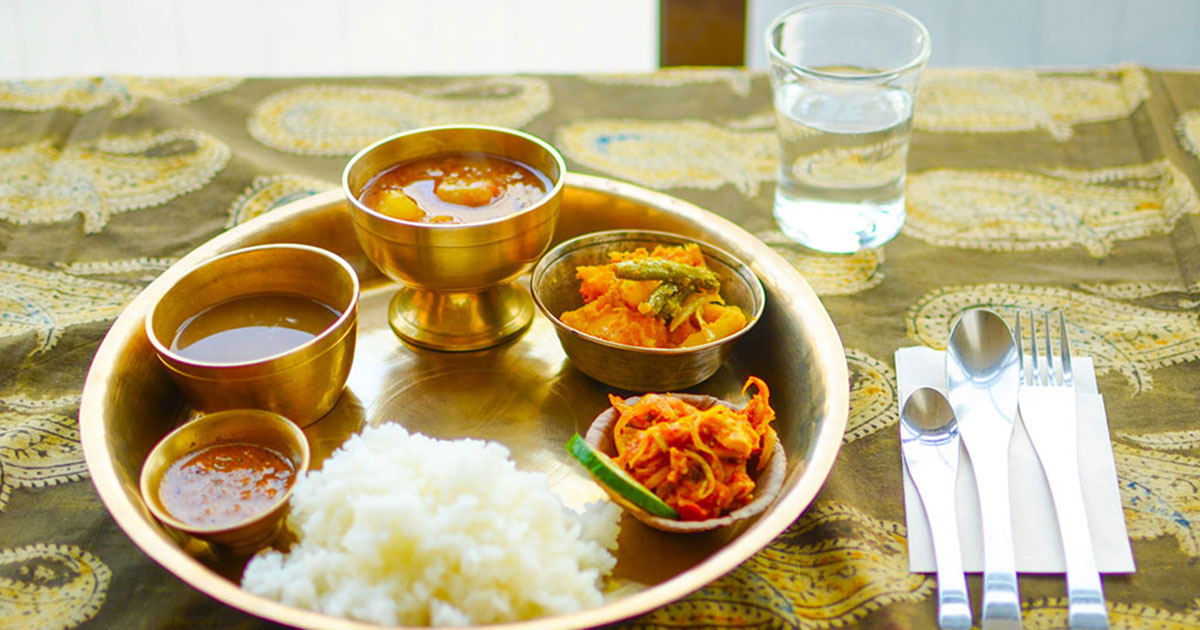
From basic homestays to sophisticated cabins and tea houses, accommodation choices vary. Camping is also possible for the more daring, with scenic spots around the village perfect for pitching tents. Homestays let visitors become immersed in local life, whereas lodges and tea houses provide modern comforts such as hot showers and Wi-Fi.
Here, we also have a list of 13 foods you should not miss while you are in Nepal.
Festivals and Spiritual Ambiance
Timing your trip to coincide with important festivals will allow you to see Ghandruk in full festivity. The village has beautiful decorations, customary dances, and ceremonies during Dashain and Tihar (October to November). Another big festival brimming with traditional meals, music, and dancing is the Gurung New Year, Lhosar.
The Ghandruk Monastery provides a tranquil respite for those searching for spiritual closeness. The sound of bells and chants and prayer flags waving in the wind create a quiet setting exactly suitable for contemplation and reflection.
Best Things to do in Ghandruk
Discover the Ghandruk Village Museum
You can explore the Ghandruk Village Museum that takes you to the core of Gurung culture. Here the time seems to freeze. At the museum you get to witness age-old tools, utensils, and arms formerly wielded by their ancestors as well as traditional Gurung artifacts like handwoven clothing. It also connects the past with the present in its own unique way; there is a sense of continuity in how these customs still exist in daily village life.

You will come across the Gurung lifestyle, festivals, customs, and agriculture as you stroll the exhibits. There are signs in the museum that help you to better grasp the value of every item. This is an ideal first encounter with the soul of Ghandruk.
Explore the Annapurna Conservation Area
The gorgeous village is located within the extensive and ecologically varied Annapurna Conservation Area (ACA). It is Nepal’s largest protected area. The Annapurna Conservation area is heaven for nature enthusiasts everywhere. If you are lucky, you may witness the rare Himalayan tahr, snow leopard, red panda, or vibrant birds like the Himalayan monal.

You’ll traverse along rhododendron-rich trails filled with the chirping sounds of birds and ablaze with bright flowers during spring, that gives you a magical experience. The ACA is not only about wildlife protection; it is about sustainable tourism that preserves the fragile balance between people and nature.
Savor the Mountain Views at Sunrise
To get up in Ghandruk and see the sun gradually rise behind the great peaks is truly magical. From the village, one gets to see Annapurna South, Hiunchuli, and the holy Machhapuchhre (Fishtail Mountain) all around. The snow-covered mountains shine golden under the first light—a sight that astounds many people.

Seek a warm tea or go to a viewpoint above the hamlet and simply absorb everything from a pleasant location. The hues vary during the day, but early morning is definitely the optimum time to admire this Himalayan beauty. Photographers enjoy a visual banquet; every frame appears as a postcard.
If you are interested to witness the Sunrise, read our blog, Best Places to View the Sunrise in Nepal.
Trek to the Soothing Jhinu Danda Hot Springs
You can also go on a rejuvenating side journey to Jhinu Danda Hot Springs which would help to ease any stiffness in your legs. The route passes quiet woods and dispersed Gurung villages only a few hours’ walk from Ghandruk.
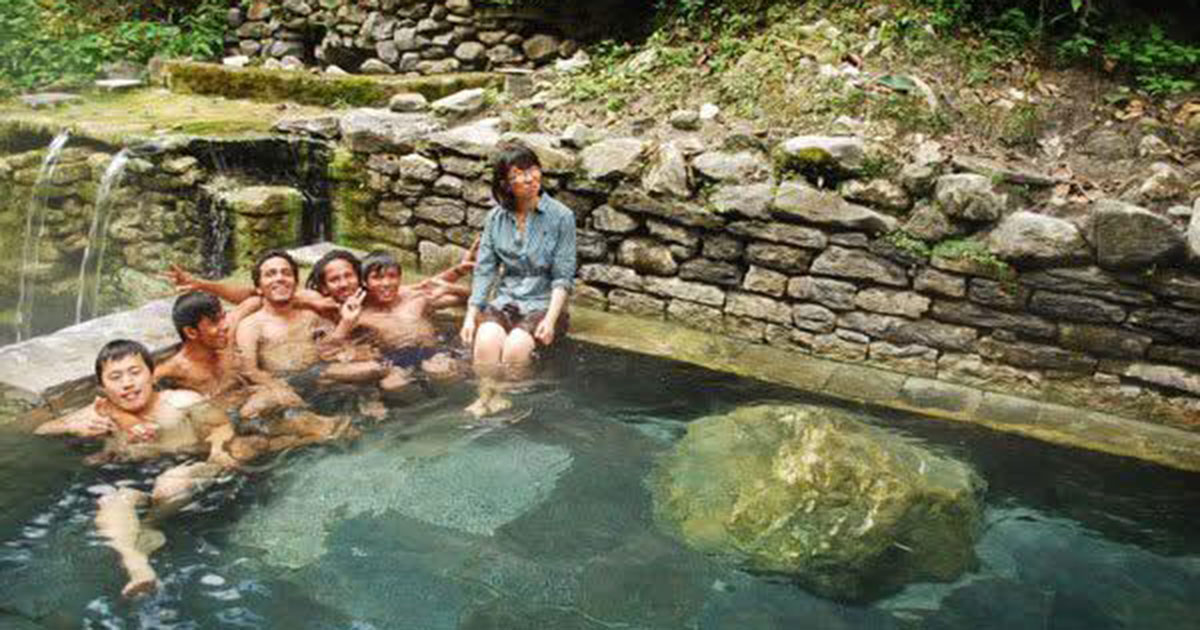
From Jhinu, you may relax by the riverside in the natural hot springs. The water is thought to have medicinal qualities and is high in minerals. It is set in perfect surroundings of hills and the gentle murmur of the Modi River to unwind, rejuvenate, and commune with nature.
Wander Around the Ancient Gurung Stone Houses
You will be in awe of the Ghandruk’s architecture as it is enchanting as its setting. You should definitely roam around the narrow alleys lined with centuries-old stone houses and see their slate roofs glinting under the sun. These homes are built using local materials—stone, wood, and mud—designed to endure harsh winters and monsoon rains.

Many of the houses have been passed down through generations, standing strong as silent witnesses to the village’s rich history. The layout of the village, the carved wooden windows, and the blooming flowerpots outside every home give it a storybook charm that’s irresistible.
Short Hike to Deurali Viewpoint
You can also go on a short hike to Deurali Viewpoint. It is situated above the village, and the trail passes through quiet woods and offers panoramic views of Annapurna II, Annapurna III, and Machhapuchhre from a numerous angle.
It’s an easy half-day hike, which is ideal if you don’t seek a longer trek but still want a dose of Himalayan grandeur.
Permits and Entry Requirements
As we know that Ghandruk lies within the Annapurna Conservation Area, so you should get following permits:
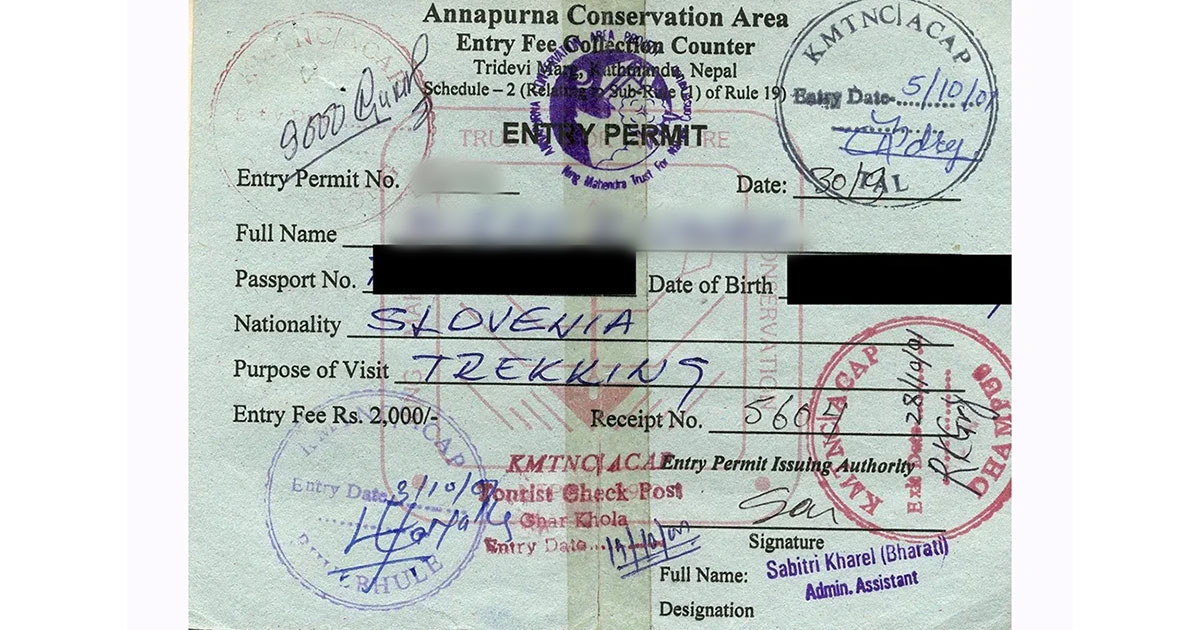
- ACAP (Annapurna Conservation Area Permit)
- TIMS (Trekkers’ Information Management System)
You can get these permits relatively easily from the Nepal tourism board and can be arranged independently or via a trekking agency like Awesome Holidays Nepal.
Similarly, it is highly recommended to hire a local guide—not only for navigation but also for deeper cultural insights. Porters can be arranged in Pokhara or Nayapul if you’re carrying heavy gear.
Get Ready to Visit Ghandruk
Ghandruk is where nature, culture, and adventure blend seamlessly. It offers something for every kind of traveler—breathtaking Himalayan views, rich traditions, serene trails, and genuine hospitality.
Whether you’re using it as a base for longer treks or soaking in the peaceful village life for a few days, Ghandruk promises an unforgettable experience. In a country filled with dramatic landscapes and vibrant cultures, Ghandruk still manages to stand out as a true gem of the Annapurna region.
Get your experience of the Ghandruk region!
FAQs
Expand AllWhat is the altitude of the Ghandruk?
Ghandruk is situated at an altitude of 2,012 meters (6,601 ft).
Where is Ghandruk located?
Ghandruk is located in the Kaski District of the Gandaki province of Nepal just north-west to Pokhara.
What is the ideal season to visit Ghandruk?
The best season to visit Ghandruk is spring (March to May) and autumn (September to November) seasons.
What are the permits required for the Ghandruk visit?
You would need to get two permits the Annapurna Conservation Area Permit (ACAP) and the Trekkers Information Management System (TIMS) card foe visiting Ghandruk.
What is Ghandruk famous for?
Ghandruk is known for the traditional Gurung culture, their hospitality, and magnificent views of the mountains like Annapurna, Machhapuchhre (Fishtail), and more.
What is the population of Ghandruk Village?
According to the 2011 Census, the total population of Ghandruk Village was 5,529 with 986 households.
Is Ghandruk Worth Visiting?
Absolutely, you must visit Ghandruk Village when in Nepal and it is totally worth it.
Related blog posts
Discover a choice of tourist destinations loved by most of our visitors. Whether you're on a jungle safari to spot rare animals or walking through a world heritage site, these well-planned itineraries cover the major highlights of Nepal.


